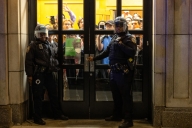You have /5 articles left.
Sign up for a free account or log in.
A new report examines the challenges that Latinx students face on the path to higher education, which have been exacerbated by the COVID-19 pandemic.
UnidosUS, the largest Hispanic civil rights and advocacy organization in the United States, conducted eight listening sessions with 78 people with its affiliate organizations in several states prior to the pandemic, according to a news release. The focus on these students' experiences comes as Latinx students are predicted to make up more than one-quarter of the undergraduate student population by 2026.
The study found that 70 percent of Latinx students who enroll in college are first-generation students and thus lack family knowledge about the application process. These students can also face language barriers and challenges due to their immigration status.
Latinx students are also more likely to come from disadvantaged backgrounds, the report found. While Latinx families have one of the highest workforce participation rates, they are more likely than others to live in poverty. It can be difficult for them to figure out how to pay for college with lower incomes and less familial wealth. Students who spoke with the researchers talked about how economic stress was a large factor in their decision-making process for higher education.
The report also found some good news. Targeted institutional supports can help Latinx students thrive while pursuing an education, it states. There was a significant difference in the experiences of students who had access to programs like TRIO, a federally funded suite of programs that aim to provide services for students from disadvantaged backgrounds (such as first-generation students), or the College Assistance Migrant Program, which helps students who are seasonal farmworkers or children of such workers during their first year of undergraduate studies.
The report recommends improving student data, simplifying federal aid applications, making access to high-quality colleges more affordable for students with great needs and strengthening supports for Latinx and first-generation students, among other things.








